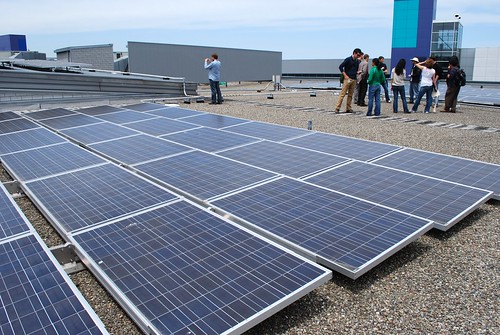This past week I got a chance to take an up-close look at the solar panels up on the roof at work. My building doesn’t actually have solar panels yet, but many of the main campus buildings and carports do. I grabbed one of the campus bikes and headed over to meet up with the green committee and take a quick tour. Since I’m writing about my place of employment, the standard disclaimer applies.
At the time the panels were installed, it was the largest corporate PV project in the country. Coming from Ohio to a sunny state like California, it’s a little surprising that Google’s 1.6MW project in 2007 was so groundbreaking. I think part of the problem has been that it takes a few years to see the return on the investment, and for the past decade or so everyone’s been so caught up in the short term. The company expected it would take 7.5 years for the system to pay for itself, but given the way utilities charge for peak load I hear we’re even ahead of that mark.
Here are a few closer shots of the panels:


